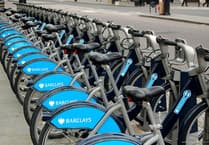A Herefordshire Council bid for government funding paints a bleak picture of the county.
As well as an ageing population, with a growing number of over-65s and declining numbers of those of working age, Herefordshire also has declining health, with a 2021 survey finding just 41 per cent of residents rating their health as “good”, the bid says.
Meanwhile, about 4,450 of children in the county live in absolute poverty, with the highest rates in parts of Hereford, Leominster and Ross-on-Wye.
One in six homes in Herefordshire is also defined as being in “fuel poverty” – a considerably higher figure than for England as a whole, and thought to affect the health of older people in particular.
Median (middle-value) weekly pay in Herefordshire is £536 – some way below the national figure of £613, and the lowest figure of all 14 West Midlands authorities. House prices are higher relative to earnings than the national average.
The county’s productivity lags even further behind, with so-called “gross value added” per hour put at £23.79, compared with a national average of £35.15. This figure “has also grown at a slower rate than nationally, which is resulting in the productivity gap widening”, the council’s bid says.
The share of the working-age population with vocational skills is also lower than the rest of the country. Around two-thirds of Herefordshire businesses have trouble recruiting, particularly for professional, managerial and clerical positions, and the business start-up rate is below the national average.
As for social mobility, Herefordshire is “among the worst 20 per cent of local authorities in England in terms of children from disadvantaged backgrounds progressing into a good job and secure housing”, the bid says.
The Government launched the UK Shared Prosperity Fund (UKSPF) in April to replace the so-called structural funds which the EU gave out to priority areas.
With Herefordshire one of the 100 priority areas for the new fund, the Government has allocated the county over £7.5 million from it between now and 2025, which the council says is “critical to supporting economic growth”.
Just over £900,000 of this is already earmarked for a programme to boost adult numeracy in the county.
The council’s cabinet is expected to confirm the bid for the remaining sum next week, which will then be submitted to the Government on August 1.
The council does not have to contribute to the spending. But its investment plan has to be approved first.
The plan, developed in consultation with local stakeholders, sets out general priorities for investment under the fund’s priority headings, rather than individual items of expenditure.
Under “communities and place”, the money “will build the unique identities and place-based assets of towns and communities through enlivenment, visual arts, music, events and festivals, as well as support the creative economy and local craft industries”, the bid says.
To support local businesses, the council “is particularly keen to support the growth of the environmental technologies sector”, while defence and security IT, along with food and drink processing, also “offer the opportunity for innovation-led growth and higher skilled employment”.
Improved energy efficiency “is also vital to the resilience of our business base”, it adds.
Under “people and skills”, the council will also fund training for people in low-productivity occupations, “to help them transition towards higher-skilled work” once the bid is approved.




